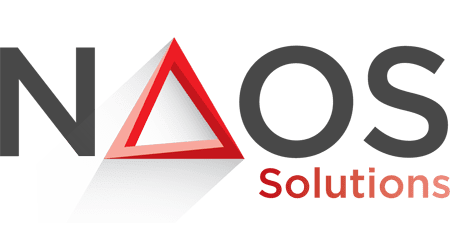Today’s SaaS subscribers demand nothing less than exceptional support experiences. When expectations aren’t met, the consequences are severe. In fact, in the United States, over 62% of customers have canceled subscriptions due to poor support experiences.

For subscription-based businesses where customer lifetime value directly impacts revenue, this reality makes outsourced support not just an option, but a strategic necessity.
The Real Cost of Poor Support in SaaS
SaaS companies face unique challenges that traditional businesses don’t encounter. Your customers aren’t just buying a product once; they’re continuously evaluating whether your service deserves their ongoing investment. This evaluation happens most critically during support interactions.
Studies reveal that 67% of customers expect excellent customer experiences, and 74% who receive positive support continue using the service. In the competitive SaaS landscape, exceptional support becomes your primary retention weapon.
The average SaaS churn rate now hovers around 3.5% monthly, but companies with superior support see significantly lower rates. This translates to millions in retained revenue for scaling businesses.
Why Traditional Support Models Fail SaaS Companies
Traditional support approaches often fail to align with SaaS business models. Unlike one-time purchases, SaaS customers require continuous onboarding, feature education, and proactive retention efforts to ensure long-term success. They need support teams that understand subscription dynamics, product-led growth, and the urgency of preventing churn.
Internal teams often struggle to scale with rapid user acquisition while maintaining quality. This is where strategic outsourced support becomes essential—it provides the scalability you need without compromising the specialized knowledge your customers expect.
IDENTIFY THE RIGHT SAAS SUPPORT FUNCTIONS TO OUTSOURCE
Outsourcing support doesn’t mean you have to give up control. It simply allows you to focus your internal resources where they matter most. But not all functions should be outsourced equally.
The first step is identifying which tasks can be handed off without compromising product knowledge, brand tone, or CSAT.
Customer Service (Tier 1 Inquiries)
Tier 1 support handles the volume-heavy, predictable queries that consume internal resources. Password resets, billing questions, explanations of basic features, and account management issues account for 70-80% of most SaaS support tickets.
Well-trained outsourced teams excel at these interactions because they follow documented processes while your internal teams focus on product development and complex problem-solving. The key is ensuring that outsourced agents understand your customer journey and can identify when issues require escalation.

Technical Support (Troubleshooting, Bug Reporting)
Outsourced technical support can be practical if the partner has the necessary training, escalation protocols, and access to documentation. They can manage device compatibility issues, bug reports, and low-complexity troubleshooting.
The critical success factor is integration. Companies report 40% faster resolution times when outsourced technical support maintains real-time communication with internal engineering teams. This requires shared documentation, escalation protocols, and regular knowledge transfer sessions.
Onboarding & Success Management
First impressions determine long-term retention in SaaS. Effective onboarding reduces churn rates by up to 67% and increases customer retention by 82%. Outsourcing onboarding workflows—encompassing guided walkthroughs, activation support, and initial success check-ins—allows you to scale these crucial touchpoints.
Successful onboarding outsourcing requires detailed customer journey mapping, clear success metrics, and automated handoff processes to internal teams for high-value accounts.
SEGMENT SUPPORT BY SAAS CUSTOMER TYPE
Different customer segments demand varying service levels. Your outsourced support strategy must align with user types, plan tiers, and business sizes to maximize retention and satisfaction.
Freemium vs. Paid Tiers
Freemium users generate the majority of support tickets but contribute minimal revenue per interaction. However, they represent your conversion pipeline. Strategic support for this segment focuses on activation and upgrade assistance rather than extensive hand-holding.
Outsourced teams can efficiently handle freemium queries through self-service guidance, feature education, and upgrade prompts, enabling users to self-serve. The goal is to provide sufficient value to encourage conversion while managing costs effectively.
Paid users, especially those in premium tiers, expect priority handling and more in-depth technical support. Recent research shows that premium users with dedicated success management have 23% higher retention rates than standard paid users. SLA-backed outsourced support can deliver this premium experience cost-effectively.
SMBs vs. Enterprise Clients
Small to medium businesses need efficient, straightforward support. They want quick answers to common questions and minimal friction in problem resolution. Outsourced teams with comprehensive knowledge bases can excel in serving this segment.
Enterprise clients have fundamentally different expectations. According to Harris Interactive, 87% of enterprise customers expect proactive communication and dedicated contact from businesses they purchase from. They require personalized success management, multi-channel support availability, and detailed issue tracking.

Tailoring Support by Segment
Utilize CRM integration and behavioral data to route tickets based on customer segments automatically. Configure different SLAs, response templates, and escalation paths for each tier. This ensures that outsourced teams deliver contextually appropriate service while maintaining efficiency.
For example, freemium users might receive email-only support with 24-hour response SLAs, while enterprise customers get phone support with sub-hour response requirements.
SET THE RIGHT KPIS AND SLAS
Outsourcing support only works when performance is measurable and accountable. Here are a few metrics you can track to evaluate the success of your outsourced support.
- CSAT (Customer Satisfaction Score): Track satisfaction for each customer segment separately. Industry benchmark show 78% as average, but SaaS companies should target 85%+ for paid tiers.
- FCR (First Contact Resolution): More critical in SaaS than in other industries because unresolved issues directly impact daily workflow. The industry benchmark is 70–75%.
- Resolution Time: Customers expect fast answers, but resolution time matters more than first response time. The industry benchmark is 12–24 hours for standard issues, with faster SLAs for higher tiers.
- NPS (Net Promoter Score): This metric measures overall brand loyalty and indicates the risk of customer churn. The industry benchmark is 50.
- Time to Value (TTV): Unique to SaaS, this measures how quickly new customers achieve their first success with your product. Outsourced support should help reduce Segment-Specific SLAs
Segment-Specific SLAs
Different customer segments require different SLA structures:
- Enterprise: 24/7 phone support, sub-1-hour response, dedicated success managers
- Premium: Business hours phone support, 2-4 hour response, priority escalation
- Standard: Email and chat support, 12-24 hour response
- Freemium: Email support, 24-48 hour response, extensive self-service resources
Build SLA compliance requirements into your outsourcing contracts with penalties for missed targets and bonuses for exceeding benchmarks.TTV through effective onboarding assistance.

ENSURE PROCESS AND SYSTEM INTEGRATION
Even the best outsourced support team will fail if they’re siloed from your internal systems. For SaaS companies, seamless integration between tools, knowledge assets, and workflows is crucial for delivering consistent, high-quality service. Without it, your customers will face delays, miscommunication, and repetitive support interactions.
Here’s what you need to do:
Sync With CRM and Ticketing Tools
Outsourced agents must work inside your core platforms, whether that’s Zendesk, HubSpot, Intercom, Salesforce, or your internal CRM. This isn’t optional. If your setup is disconnected, you’ll experience numerous fragmented conversations and data loss.
Approximately 45% of customer support teams utilize CRM systems. With complete CRM integration, the agents will have real-time access to a user history, plan details, and previous tickets.
Align With Your Knowledge Base
Support agents are only as good as the information they can access. That’s why they need a centralized, updated knowledge base. Outsourced teams should contribute to, access, and evolve this database in real-time.
According to HelpJuice, organizations have reported a 30–50% increase in the first-contact resolution after implementing a comprehensive knowledge base.
Ensure that you sync your internal documentation, FAQs, and product updates so that everyone is answering based on the same source of truth. You can also utilize tagging, AI search tools, and access controls for faster retrieval and consistent messaging.
Enable Real-Time Collaboration
Outsourced support must communicate seamlessly with internal teams, particularly product, engineering, and customer success. This requires shared communication channels (Slack, Microsoft Teams), synchronized project management tools, and established escalation procedures.
The goal is to eliminate handoff delays. When outsourced agents can instantly collaborate with internal experts, resolution times decrease and customer satisfaction increases.

Standardize Training and Access Controls
Develop comprehensive onboarding programs specifically for outsourced teams. Include product demos, customer persona training, and scenario-based learning. Regular training updates ensure agents stay current with product changes and new features.
Implement role-based access controls that provide agents with the necessary information while maintaining security. This balance ensures efficiency while maintaining data protection standards.
CHOOSE AN OUTSOURCED SUPPORT PARTNER THAT UNDERSTANDS SAAS MODELS
Your top priority when finding an outsourced support vendor should be choosing a strategic partner who understands the nuances of SaaS. Your outsourcing partner must understand subscription dynamics, product-led growth, and the unique challenges SaaS companies face.
Look for SaaS-Specific Experience
Generic BPOs may know how to run call centers, but SaaS support demands more. Your ideal partner should have direct experience supporting SaaS products across user tiers, plans, and life cycles. This includes familiarity with:
- Product-led growth (PLG) models: Knowledge of how users discover, trial, and adopt SaaS products.
- Trial-to-paid conversion support: Experience guiding prospects through evaluation processes.
- Onboarding workflows and walkthrough tools: Proven ability to support customer activation and time-to-value reduction.
- Churn Prevention Techniques: Proactive support strategies that identify and address retention risks
- Subscription Lifecycle Management: Understanding of renewal cycles, upgrade paths, and usage-based billing
Request case studies, client testimonials, and specific examples of SaaS support programs they’ve managed.
Prioritize Cultural Fit and Communication Style
Support teams represent your brand in every customer interaction. Misaligned communication styles or cultural differences can harm customer relationships and negatively impact brand perception.
Evaluate partners based on:
- Brand voice alignment and training capabilities
- Written and verbal English proficiency appropriate for your customer base
- Technical fluency with SaaS products and terminology
- Preferred communication tools and collaboration styles
- Timezone coverage matching your customer distribution

Checklist for Selecting the Right Support Partner
Use this comprehensive checklist to evaluate potential outsourced support partners:
Experience and Expertise:
- Proven track record with B2B SaaS clients (not just general support)
- Experience with customer onboarding, retention workflows, and NPS programs
- Understanding of subscription business models and churn dynamics
- Case studies demonstrating measurable improvements in SaaS metrics
Technical Capabilities:
- Ability to integrate with your CRM, ticketing system, and documentation tools
- Experience with SaaS-specific platforms (Zendesk, Intercom, HubSpot, etc.)
- Multi-channel support capabilities (email, chat, phone, social media)
- API integration capabilities for custom systems
Service Delivery:
- Flexible support tiers matching your customer segments
- 24/7 or region-specific coverage based on your user base
- Clearly defined KPIs and SLA frameworks with performance tracking
- Escalation procedures and internal team collaboration processes
Security and Compliance:
- Data security protocols and compliance certifications (SOC 2, GDPR, etc.)
- Secure access management and role-based permissions
- Regular security audits and vulnerability assessments
Growth and Scalability:
- Ability to scale support capacity based on your growth patterns
- Agent training and upskilling processes for product updates
- Performance monitoring and continuous improvement programs
- Transparent pricing models with performance guarantees
Partnership Approach:
- Willingness to participate in quarterly business reviews
- Commitment to understanding your product and customer base
- Proactive suggestions for support process improvements
- Regular reporting and analytics sharing

ADVANCED STRATEGIES FOR SAAS SUPPORT EXCELLENCE
Proactive Support Implementation
Transform your outsourced support from reactive to proactive. Utilize customer usage data to identify accounts at risk and trigger proactive outreach. Train outsourced teams to recognize churn indicators and engage customers before problems escalate.
Self-Service Integration
Develop comprehensive self-service resources that complement outsourced support. Create interactive guides, video tutorials, and searchable knowledge bases that automatically handle common questions. This frees outsourced agents to focus on complex issues requiring human intervention.
Customer Success Collaboration
Align outsourced support with customer success initiatives. Ensure support interactions contribute to overall customer health scores and success metrics. This integrated approach maximizes the value of every customer touchpoint.
CONCLUSION
Outsourced support represents a strategic opportunity for SaaS companies to scale customer experience without compromising quality or breaking budgets. When implemented correctly, it becomes a competitive advantage that drives retention, reduces churn, and supports sustainable growth.
The key lies in treating outsourced support as a strategic partnership rather than a cost-cutting measure. Choose partners who understand SaaS dynamics, invest in proper integration and training, and maintain continuous optimization focused on customer success.
For SaaS companies navigating complex user journeys and high churn risks, the stakes are too high to settle for generic solutions. Your customers deserve support experiences that match the innovation of your product.
Are you ready to transform your customer support into a retention and growth engine? Contact NAOS Solutions to discover how our SaaS-specialized outsourced support can deliver the seamless experiences your subscribers demand while supporting your growth objectives.

